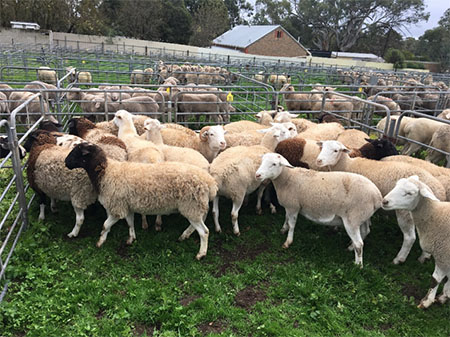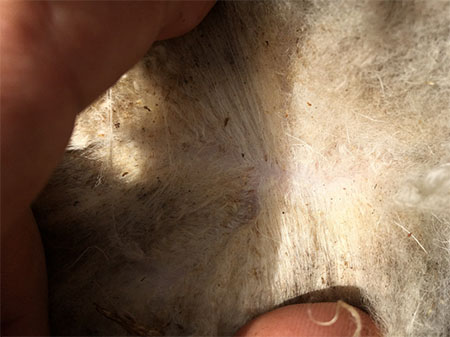In South Australia, we are fortunate to have an industry funded sheep lice control program based on detections of lice infested sheep at sale yards, and reports of lousy sheep from members of the farming community. One of the major advantages of this on-going program is that it allows us to observe and predict trends in lice prevalence across the various sheep production areas of South Australia.
For a number of years now sheep lice detections in S.A. have been relatively low, with only 62 and 59 market detections of lice for the 2016/17 and 17/18 financial year periods respectively. Compare that with 113 detections in the 2010 /11 financial year period and you could conclude that on-farm lice prevalence has fallen considerably in recent years.
Traditionally, one of the major causes of increased state wide flock lice prevalence, has been the reduction in efficacy of off shears lice treatments. Once a product that is successfully used for an extended period starts to fail, it is often (but not always) an indication that lice populations are starting to become resistant to that chemical treatment. Since 2010 sheep producers have been somewhat spoilt in their choice of lice treatment chemicals, both long and short wool, saturation products and back-liners and from my experience we aren’t yet seeing any resistance issues with the newer lice treatments available on the market.
Looking at the most recent lice detection data available for this current financial year and we see a disturbing trend. Since July 1st 2018 to the date of writing this article, there have been 54 market detections of sheep infested with lice, that’s 91% of last financial year’s total detections in less than 4 months. So if applied chemicals appear to doing an adequate job still, why the increase in detections?
The answer lies in those sheep populations that are not routinely treated as they are deemed not to harbor populations of sheep lice. In the last financial
year period (17/18), 45% of market lice detections were in breeds deemed as “wool shedding” predominantly Dorpers but also Wilti polls, Damaras and
Wiltshire horn, to name the most common breeds. Of the 54 detections so far this financial year, 37 have been from wool shedding breeds!
Unfortunately, many breeders and purchasers of these wool shedding sheep have been misled and informed that these sheep do not carry and cannot support a sheep lice population. This is completely incorrect and unfortunate that so many sheep producers have formed this opinion. In fact, when contacting producers who own wool shedding sheep, to inform them that their sheep have been detected with sheep lice, most reply that “they didn’t think these sheep got lice” and consequently didn’t look for them of try to treat for lice.
It is true that if you are farming an animal where the fleece is of no value, then treating for a parasite that may de-value the fleece, would appear to be a waste of time and money. Sheep lice however cost the sheep producer more than just losses in wool production and value. Sheep with lice infestations spend quite a deal of time itching and scratching. Sheep that itch and scratch are not grazing and sheep that aren’t grazing as much aren’t growing as fast. Couple that with the predisposition to flystrike and the risk to ones wool producing neighbors, the argument mounts for controlling lice in wool shedding sheep as much as any wool producing breed.
My advice to all sheep producers is monitor for lice often. Lice become easier to detect after 6 months since last shearing / treatment, so inspecting at lamb marking, crutching and one other time throughout the year, will ensure if you have an issue, you’ll detect it sooner. If you have lice or suspect your flock has been exposed to lice, employ the treatment guides on LiceBoss.com.au to select the best product and treatment method for your flock. If your sheep are wool shedding, consult your local Animal health officer or rural merchandiser for the best treatment option. Whilst some products make no claims about controlling lice in wool shedding breeds, there has been some trial work done suggesting if applied correctly in conjunction with other good Biosecurity practices, then good lice control can be achieved.
AND if someone tells you that wool shedding sheep don’t get lice, politely inform them that they do and let’s keep on top of sheep lice in all breeds, for the benefit of the whole sheep industry.

For further information contact Chris on (08) 85 686 415.
By Chris van Dissel, Sheep Lice Program Manager, Biosecurity SA





